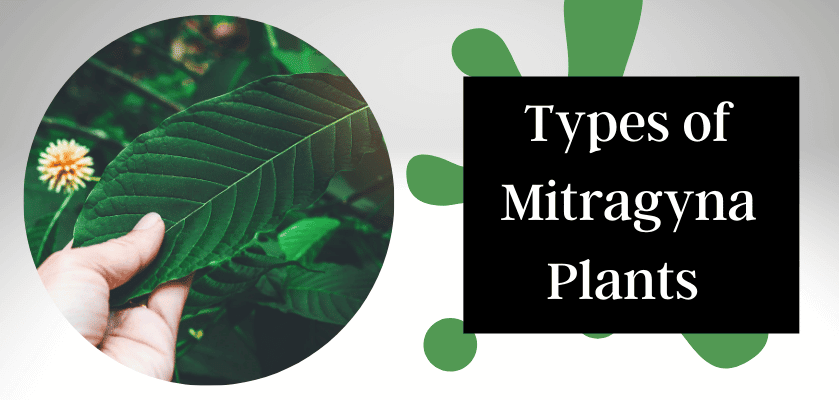
Kratom is not offered in all parts of the world. This herb has a lot of legal issues which has kratom enthusiasts looking for
alternatives to kratom. In this guide, we will review all the different types of Mitragyna Plants. This will help you understand kratom better, as well as check out
some alternatives that could offer the wellness support that you are seeking.
What Is Kratom
Kratom is a part of the Rubiaceous family, which is better known as coffee. This tree is native to Southeast Asia and grows in countries such as Indonesia, Malaysia, and Thailand. Mitragynine and 7-hydroxymitragynine are the main alkaloids in kratom.
There are many different strains available with the most popular being
Maeng Da, Borneo, and Bali. There are 4 different vein colors, which include red, white, green, and yellow. These vein colors all occur naturally except for yellow. Yellow vein kratom is the product of a specialized drying process.
The vein color indicates the maturity of the plant. Red vein kratom comes from the most mature leaves, while white vein kratom signifies the leaves are at the early stages of their life cycle. Green vein kratom falls right in the middle of red and white.
Kratom is often characterized by where it originated from and its vein color. So, when you see a name like Red Borneo, you know that it is red vein kratom that originated in Borneo. This helps users to easily identify with the various strains of kratom.
Types of Mitragyna Plants
Mitragyna is one of the main alkaloids found in kratom. According to Wikipedia, “Mitragyna is a genus of trees.” These trees grow in tropical locations such as Asia and Africa. This genus of trees is packed with antimalarial and analgesic indole alkaloids. The Rubiaceous family is the 5th largest family of flowering plants.
#1 Mitragyna Diversifolia
The
Mitragyna diversifolia is a large tree that can reach up to 15 m high. This plant is also known as Mitragyna Javanica. The leaves on this tree are oblong and vary in size which average 146 x 93 mm. It is a flowering tree that also bears fruit. This tree grows in the wilds of China, Cambodia, Indonesia, Laos, Burma, the Philippines, Thailand, and Vietnam. This herb is offered in whole leaves or powder form. It does also come in gel caps but these are not as widely available as the powder form.
#2 Mitragyna Hirsuta
Mitragyna Hirsuta grows naturally in Cambodia, China South-Central, Laos, Myanmar, Thailand, and Vietnam. This tree bears light green leaves with white veins that run through them. When compared to kratom leaves you will notice that Hirsuta leaves are smaller in size.
Hirsuta powder became very popular in Thailand after kratom was banned in this country. While Hirsuta is known to have similar properties to kratom, it is not as potent. A lot of users prefer Hirsuta for this reason. This herb contains high levels of the alkaloid mitraphylline. If you are looking for an alternative herb to kratom you may want to check out Hirsuta.
#3 Mitragyna Inermis
Mitragyna inermis is a tropical plant that can grow up to 16 m in height. The diameter of this shrub can reach up to 60 cm. Branches are known to form towards the bottom of the plant. This plant has been harvested for centuries for its wood and dye. Locals use it to complete various projects. It grows in parts of Africa including Senegal, Sudan, and Zaire.
#4 Mitragyna Parvifolia
Mitragyna parvifolia is native to Asia including countries such as India and Sri Lanka. This plant has been used for centuries in Asian culture. It can grow up to 50 feet in height and branches can span to 15 feet. It produces a yellow flower that grows in a ball-like cluster. The leaves of the tree are dark green and have a smooth texture.
#5 Mitragyna Rotundifolia
Mitragyna Rotundifolia can grow up to 30 m in height. This tree is also known as Roundleaf Kadamb. This medium-size tree has elliptical oblong leaves. The leaves measure 1.3 to 5 x 0.5 to 3 cm. They are flowering shrub that is found in East Himalayas, China, and Southeast Asia.
#6 Mitragyna Speciosa
Mitragyna speciosa is also known as kratom. This is the most well-known herb in the Mitragyna family. As we mentioned above it grows throughout Southeast Asia. It has been utilized for centuries in Asian culture and social settings. It is offered in
powders,
extracts,
capsules, shots, and more. It seems that more and more kratom products are coming to market all the time. However, more research is needed to truly understand kratom and what it has to offer.
#7 Mitragyna Tubulosa
Mitragyna tubulosa grows in Peninsular India within the Western Ghats. This deciduous tree can grow up to 15 m tall. It produces yellow flowers and has small oblong leaves. It shares some characteristics with other plants mentioned in this blog.
Conclusion
While kratom faces legal issues in many parts of the world, the other Mitragyna plants do not. They may be viable alternatives to kratom, but you should always consult with your physician before starting any new herbs or supplements. They will know your medical history and what current medications you are on. This will help them decide what supplements are best for you to try.
Author Details
Follow Me:
Written by Nimesh Madushanka
Updated on August 22nd, 2025


